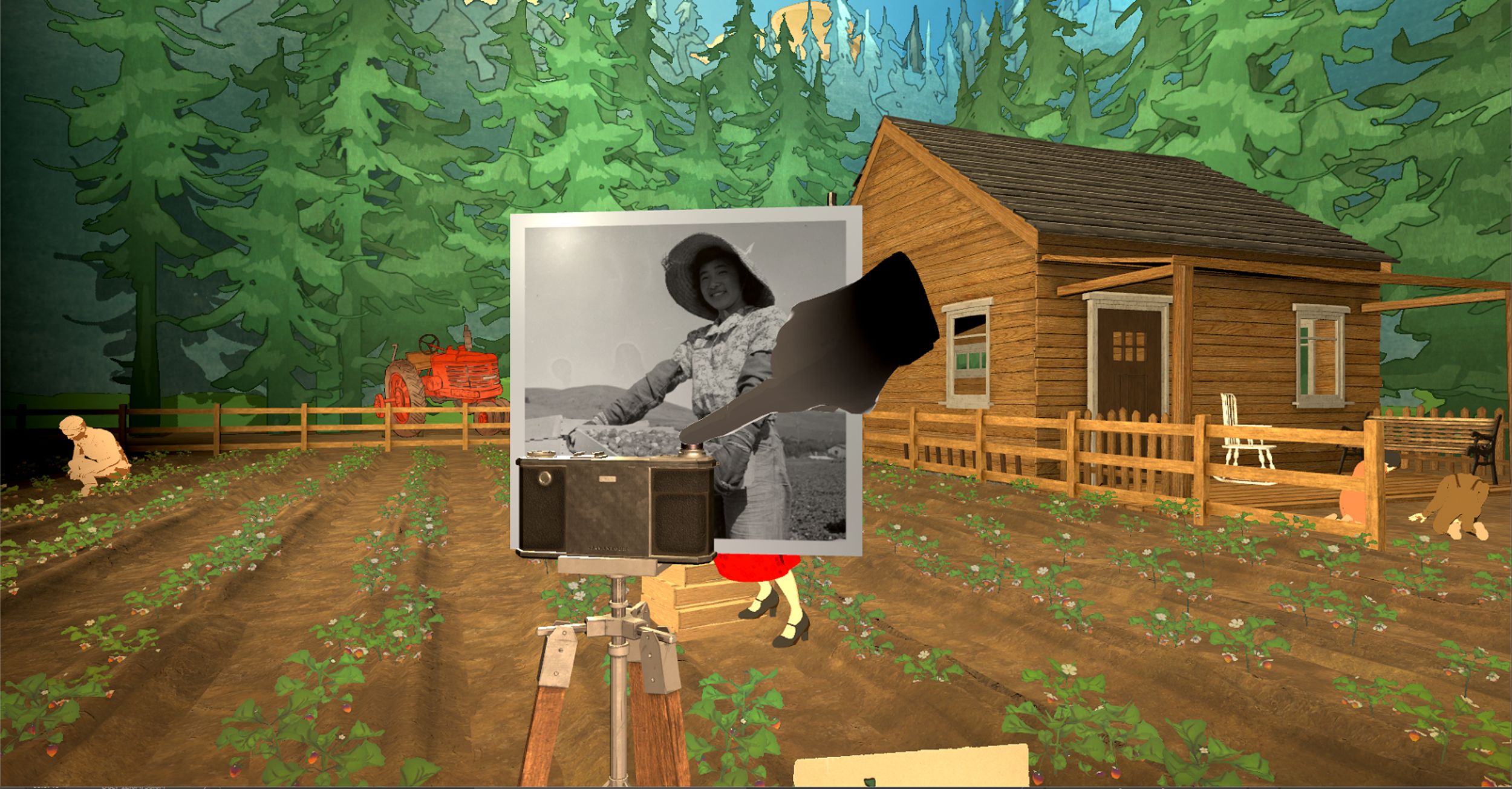
The Book of Distance
In 1935, director Randall Okita’s grandfather left Hiroshima for Canada, where he was interned in a camp for Japanese Canadians during World War II. His home and land were expropriated.
In Okita’s depiction of this life story, motion-capture animated figures appear without faces, including the director himself. This abstraction emphasizes the uncertainty of the reconstruction, due to the shortage of documents and the silence of his grandfather. It is unclear what the house in Hiroshima looked like, for example, or indeed the camp. But these uncertainties are overcome through stylized design that references Japanese woodblock printing and theater traditions, and which draws inspiration from Okita’s background in animation, mechanical sculpture, and installation.
The VR user’s sense of engagement is enhanced by intuitive interactions with very real looking objects (such as packing a suitcase or throwing a horseshoe) which are always employed to advance the story. The user also gets to see some surviving documents, including newspapers, letters, and family photos.
This project is a virtual reality experience.
Videos
Images



